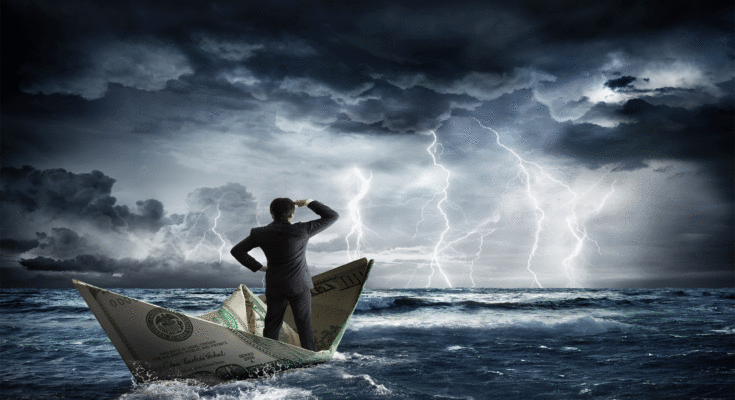The timing of any credit crisis is set by the rate at which the credit cycle progresses. People don’t think in terms of the credit cycle, wrongly believing it is a business cycle. The distinction is important, because a business cycle by its name suggests it emanates from business. In other words, the cycle of growth and recessions is due to instability in the private sector and this is generally believed by state planners and central bankers.
This is untrue, because cycles of business activity have their origin in the expansion and contraction of credit, whose origin in turn is in central banks’ monetary policy and fractional reserve banking. Cycles of credit are then manifest in variations of business activity. Cycles are the cause, booms and slumps the consequence. It follows that if we understand the characteristics of the different phases, we can estimate where we are in the credit cycle.Â

With sound money, that is to say money that neither expands nor contracts, cycles in business activity cannot exist, except for plagues and wars which interrupt the balances between money-hoarding, saving and consumption. Any exceptions to this rule are bound to be insignificant and non-cyclical, because with a steady money supply, failures are random instead of cyclically clustered by monetary policy.
Capital is always allocated by entrepreneurs to favour the efficient production of the goods and services wanted by consumers. Allocations of earnings and profits to savings are set by entrepreneurial demands for monetary capital to finance production until the goods and services produced are sold. Failures, the result of errors of judgement by entrepreneurs, are inevitable, but are quickly accepted, and capital is redeployed accordingly. As soon as a non-commercial force, such as the state, corrupts the free market’s interplay between entrepreneurial production and consumer demand, the progression of an economy becomes unbalanced. Variations in the quantity of unbacked money to achieve a managed objective are particularly disruptive. The consequence, not accepted by the vested interests of interventionism, is a cycle of credit expansion leading to a compensating crisis.
This is the outcome of monetary policy. It creates nothing but an illusion of genuine economic activity by debasing the unit of account. In pursuing an objective of economic growth, governments are simply recording the application of the unsound money they and their licensed banks have created. It is our damnosa hereditas, our ruinous inheritance.
The purpose of this article is to establish where we are in the global credit cycle, and to estimate from that the likely time-scale to the next credit crisis. And yes, it is a global phenomenon, made more powerful by global synchronisation of monetary policies through forums such as the G20. Trying to understand where we are in the credit cycle of one particular nation misses out a bigger picture. But we can observe where we are in it by assessing the interplay between business sentiment and monetary factors.
Understanding the credit cycle
The credit cycle can be broken down into the following phases: post-crisis stabilisation, recovery, expansion and finally crisis. The transition from one phase to another is somewhat arbitrary, and each cycle differs in length and character. For these reasons, applying a statistical approach to identifying the different phases usually fails to elucidate analysis. It is far better to have an understanding of shifts in sentiment in the minds of consumers, producers and lending banks, and how they interact.
At the beginning of the credit cycle, central banks exert the most economic influence through monetary policy. They do this by ensuring, as far as they can, that the market does not clear. By this we mean that the accumulation of malinvestments in the previous cycle is protected, thus preserving jobs in businesses that in a free market would have been abandoned as producing an inadequate return. The capital employed in these unserviceable industries becomes locked in, not quickly redeployed as it would in an efficient economy. And by capital we include not just money, but all the other factors of production that must be acquired, including labour.Â
In today’s interventionist, neo-Keynesian world, prices must never be allowed to adjust downwards to establish new price equilibriums, as they would in free markets. The balance between savings and immediate consumption is encouraged to adjust in favour of immediate spending to shore up falling prices.Â
This gives us a basic rule, which has always held to date: by debasing the currency and reducing, eliminating or even reversing the time-preference inherent in unhampered free markets, central banks have always stoped the credit crisis from running its full course.[i] There were moments in the last two crises when this nearly did not happen. We all stared into an economic and financial abyss of complete systemic failure, with the potential to destroy the banks and all their customers’ balances. And without banks, the production of all goods and services were likely to cease or be provided through nationalisation. In both instances, the Fed under the chairmanship of Alan Greenspan and then Ben Bernanke came to the rescue.Â

